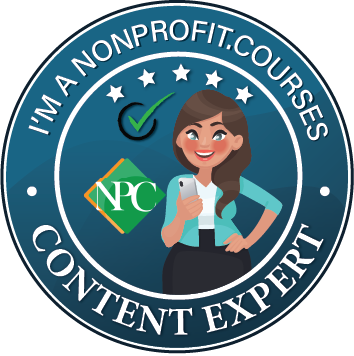Save Time: Get 5 Simple Writing Tips
you can put to use in 10 minutes
Making a Pitch: My Top Tip for Freelance Content Writers
Award-winning writer Kathy Widenhouse has helped hundreds of nonprofits and writers produce successful content , with 750K+ views for her writing tutorials. She is the author of 9 books. See more of Kathy’s content here.
Posted 7.22.25
I recently received an insightful comment from a faithful reader. “Making a pitch is rather useless if it is not sent to the right target,” he wrote. “Writers need to know where to look for freelance content writing jobs and who to approach.”
Absolutely right! Maybe you’re familiar with the scenario. You’ve slaved for hours and now have the perfect pitch to send to a prospect. Finally, you click “Send” or drop the letter in the mailbox.
But little do you know that the CEO’s assistant screens incoming mail, sees your message, and hits “Delete” — or dumps your letter into the trash can.
All because you’ve sent your letter to the wrong person.
Making a pitch starts with detective work
Naturally, I’m not talking about making a pitch when you’re responding to listings on job boards. Nor am I talking about making your pitch to the managing editor of a periodical — a name that’s listed on the masthead, whether it’s print or online. In each case, it’s clear to whom you should address your inquiry.
I’m talking about making a pitch to write content for a business, agency, online storefront, nonprofit, or any other prospect who needs words. It’s much like a cold call, but in writing.
Content writing is a ripe market for freelancers who are willing to get paid to write for someone else.
And who are willing to do the work to find these people.
Plenty of experienced freelancers can explain how to write a pitch. Few tell you who should receive your pitch. And hardly any explain where to find those names and addresses.
“I’d do that if I could,” you protest. Now, you can … with some detective work.
Where do you pitch?
Here’s where plenty of would-be freelance phenoms get hung up. How do you find the names of entities in your niche who need your content? (I’m assuming that you’ve identified a niche or two where you want to focus your efforts — or at least a couple of niches where you’ll start.)
Oh, they need content writers, especially if they’re mid-to small-sized. Those organizations can’t afford a staff writer. If they’re large, they need freelancers to fill in when there are extra projects in the pipeline.
But it takes a bit of sleuthing (that plenty of freelancers don’t want to do) to find these prospects. If you’re willing to invest the time, you’ll open doors. Here’s how.
1. Search industry directories
A directory is a listing or searchable database. It helps users find and contact companies and service providers. As a writer, you can use a directory to build a list of potential clients in your niche to pitch.
Let’s say you specialize in the home and garden niche. If so, then check out Houzz, a directory of home and garden pros. If you’re interest is in startups, then use Crunchbase.
Struggling to identify directories in your niche? Try this search formula: “[your niche]” + “directory.” For example, “marketing agencies in Charlotte” + “directory” yields oodles of results for marketing firms in Charlotte, NC, where you can pitch your services.
2. Join an association
An association is a membership-based organization that brings together professionals, companies, or institutions within a specific industry or cause. Join an association in your niche (if you’re not already a member) to network, learn, and become visible to potential clients in your niche, especially if the group includes the types of organizations you want to write for.
For instance, if you write for tech, then you could join the International Society for Technology in Education (ISTE) or the CompTIA for IT and tech service providers. Now, you have access to the membership list … and a ready-made list of prospects. My first list of prospects came from an association of faith-based organizations that wanted fiscal accountability.
Not sure where to look? Ask ChatGPT to suggest directories and associations tailored specifically to your ideal writing clients.
3. Scan job boards
Use freelance job platforms such as Upwork, Fiverr, or Freelancer.com — but not to answer specific ads. Instead, set up notifications for your keywords, such as “alternative health content” or “bitcoin writer.” Ditto for job boards specific to your industry, as well as Indeed and LinkedIn. Then study the ads for freelance writing gigs in your niche.
These folks are posting specific gigs. That means they have an overflow of work. They need a regular freelancer who knows the niche.
Jot down the names of those who post, whether it’s an individual (a good clue they’re the gatekeeper for their firm) or the name of the company. Keep a list. And pitch.
4. Analyze websites in your niche
Use tools like SEMrush or Ahrefs to analyze websites in your niche. Identify the ones that seem to lack updated content. While you’re at it, study their keywords and backlinks.
Then make a list of prospects to pitch. Say, “I see you’re not publishing regular blog posts (or a newsletter or updating your website content). May I show you how that can help your visibility?”
5. Comment on social media
Follow industry leaders, businesses, and organizations on LinkedIn, X — even Instagram and Pinterest, if that’s where your niche lives the most. Then engage in conversations. But don’t waste your time with generic, “Great post” comments. Share helpful, valuable information. Where appropriate, include links to relevant posts on your own site to add value for other readers. While you’re at it, post your articles, blog posts, or case studies on your socials.
Follow the responses closely. When a visitor asks a question or for advice, follow up — and pitch.
6. Attend networking events
Attend conferences, trade shows, and networking events — both in person and online — where businesses in your niche gather. You’ll get direct access to decision-makers and potential clients. Explain, “I’m a freelance writer for [industry]. Here’s my card. I’d like to work for you when you have too many projects to cover in-house. May I follow up with you in a month or two?”
Make a pitch to the right person
When you pitch to a company president, vice president, CEO, founder, or board chairman, you’re probably wasting your time (unless it’s a small business). Those folks don’t handle content.
Pitch to the individual in the company or biz or nonprofit or agency who needs writing. Look for the person listed as marketing manager, content director, creative director, brand manager, SEO director, digital marketing lead, content strategist, social media manager …
How do you find that person? Check the company’s website. Or use this quick search template on LinkedIn: “[Company Name] + Head of Content.” That’s your person.
Making a pitch that wins
Yes, by all means, write a solid pitch letter and keep it on hand. But make an effort — where others won’t — to find under-sourced prospects. Invest your time in uncovering the businesses and companies and nonprofits and agencies that are flying under most freelancers’ radar.
Keep a record of the prospects you find. Create a simple table in MS Word to include the biz name, where you found it, the contact person you’ve dug up, when you send the pitch, and the response.
It takes more work than most freelancers are willing to invest. But pitch to the right person — and your chance of landing gigs increases exponentially.
More about Finding Freelance Content Writing Jobs
How To Write A Pitch Email That Gets a Yes: 5 Tips ...
2 Types of Letters That Get You Paid Writing Gigs ...
Where to Find Freelance Writing Jobs With Nonprofits ...
The 2 Main Ways to Build Your Freelance Writing Business ...
Turn One Freelance Writing Job into an Anchor Client ...
Selling Your Services: 6 Writing Tips for Starting Out as a Freelancer ...
Find Freelance Writing Jobs With This Offbeat Strategy ...
Two Types of Readers That Pay You To Write ...
Return from Making A Pitch to Nonprofit Copywriter home
As an Amazon Associate I earn from qualifying purchases.
Share This Page

Named to 2022 Writer's Digest list
BEST GENRE/NICHE WRITING WEBSITE


Stop Wasting Time!
Grab your exclusive FREE guide, "5 Simple Writing Tips You Can Put to Use in 10 Minutes or Less"














